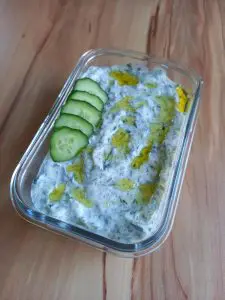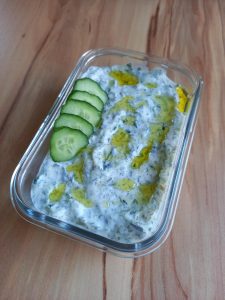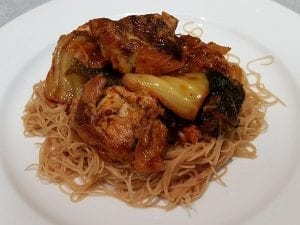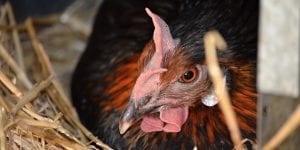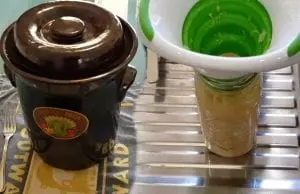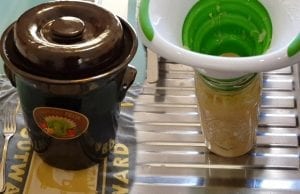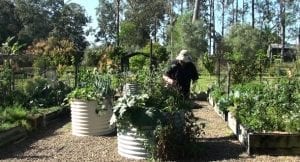Introduction
This article is about tuning back-in to the nature around us and how we can learn about doing that by looking at self sufficient cultures (like the Australian Aboriginal). Also, in this article I explain how a survival course taught me about bush tucker and self sufficiency.
Survival Course in the NT
One of my tasks when I was a soldier required me to undertake a survival course. The three week course designed by Les Hiddins himself (a retired Army Major and survival expert from the Australian TV series – The Bush Tucker Man) was informative but gruelling and bordering on torture. The course was set in the tropical Northern Territory in the middle of the scrub a few hundred kilometres from Darwin.
I remember counting over 72 mosquito bites (that I could see) over my arms and legs ,which was a worry because, yes the welts were uncomfortably itchy, but more so a few other guys in my unit had contracted Ross River fever (a mosquito-borne disease) with severe flu-like symptoms that can last for years, and I certainly did not want the same thing to happen to me.
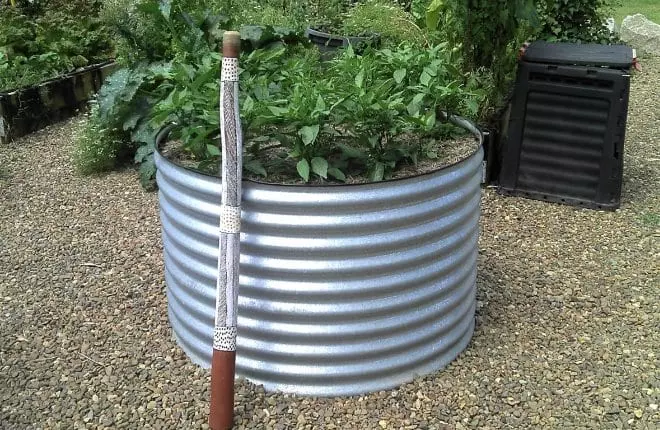
Dodging mosquitoes was impossible though, especially at night as they swarmed by the thousands so to avoid being eaten alive we walked in little circles every few minutes from sundown to sun-up as this seemed to work for awhile before the little buggers found us again.
We had no repellent (this luxury wasn't allowed) so we tried mud rubbed on our skin, grass stuffed in our clothes, covered in grass and branches trying to sleep, but nothing could stop those incessant creatures from finding a way to feed off us. Prior to being dropped in the bush in teams of three for our last phase of the course, we were stripped-searched and besides our clothes we were only allowed to carry a knife, steel cup, some fishing line, a small notebook and pencil, and a portion of dried goat we had made a few days earlier back at the main camp. At sun-up each day, most of the mozzies went away so we literally fell to the ground exhausted and slept for a few hours – but we couldn't sleep for long as there was work to do like: food gathering; trap making; fire making (from two bits of wood); sun-dials; shelters; rescue markers; water finding and filtering; and a surprising amount of other work one needs to do to stay alive in these situations.
For the best part of a week my team and I battled isolation, heat, thirst, hunger, insects, animals, exposure, and sleep deprivation.
Finally, we heard the distant thumping of a helicopter and as it approached our position some guy with a big grin on his face threw out a flare with a canister and a note inside saying navigate your way back to “this” position and if you make it back it will mean the end of the course and you will have passed. Gee, I was happy about that… but a compass would have been a handy help at that moment.
Traditional Aboriginal Bush Tucker
When we finally made it back, we were treated to a traditional Aboriginal cook-up by the local tribe where food is placed in a camp fire over and under hot coals to roast. All sorts of food was on offer from wallabies, barramundi, yams, tubers of sorts, grubs, kangaroo, to goanna, and it really was an amazing smorgasbord of traditional chow. Really extra-amazing to me because I had just spent three weeks in the same bushland hunting for food and I hardly found or caught anything to eat! We were starving!
Unfortunately, my stomach had shrunk to about the size of an eyeball, and I could barely eat much at all although I did my best to eat my fill. Out of all the offerings I sampled my biggest regret was probably eating too much goanna. Goanna was the first food I was given so at that moment I was quite ravenous and it looked like Peking duck to me (anything would have looked good after what I'd been through) so I hooked right in and it didn't taste too bad (nothing like chicken). However, the next few days after (especially the very next day) I smelt like goanna oil all over – it was coming out of my pores – and I had to wash my clothes several times to get the goanna stench out. Thankfully, I'll never have to eat another goanna again… I hope.
Australian Aboriginal Self Sufficiency
The Australian indigenous people are the epitome of a self sufficient culture. For over 40 thousand years they inhabited Australia before white man and for all that time they were able to live comfortably and sustainably in harmony with the creatures and land. In contrast, since the white man came he has clogged rivers, killed animals to extinction, cleared masses of vegetation, multiplied like rabbits, introduced pests (like rabbits), and much more all in just a little over 200 years!
But let's not go down that reflective (bad white man) road because the debate just goes nowhere – it's about what we do in the future that counts now. What I am more interested in is the science behind indigenous self sufficiency and what we all can learn from them and their lifestyle. The culture of the ingenious in most countries was to respect nature and use what you need not take all – store – and then sell to make big profits only to quickly move on leaving a barren earth behind.
Eating in Season
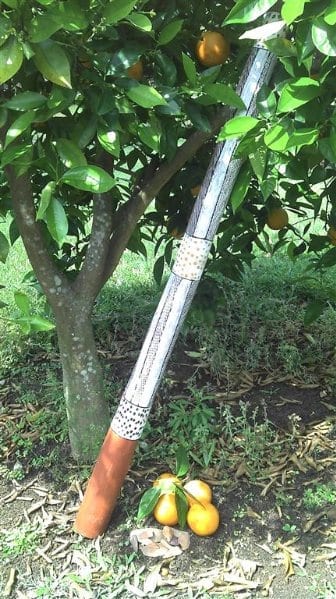
Working with the seasons and using the plants, animals, and other resources as required like the Australian Aboriginals is a much more sustaining, low impact way of living – follow the link to see an interesting bush tucker list from Bangerang Cultural Centre showing an extensive list of foods some Aboriginal people used http://home.vicnet.net.au/~bangercc/bushtuckerlist.html . This style of living allows for the regeneration of plants, animals, water courses, etc and means they'll be there for next time.
We can adopt this seasonal style somewhat in our own backyards in a contemporary way by choosing to grow and eat what is in-season and then limit buying out-of-season food. Even adopting the principle of only buying in-season would be sensible – if you can't grow much yourself. Think of the energy saved in transportation costs alone by not buying so-called “fresh” goods sourced hundreds or thousands of miles away. This method of eating in-season is a lot easier than it seems and for the majority of people just following natures way is usually good enough.
What I mean by natures way is the very successful way she sustains the planet's wild plants and animals 365 days a year by providing them with all the food and nutrients they require. Generally, nature does a good job at looking after all these living things and we should tap into a little of that methodology.
By growing particular species or varieties of plants and animals at home, or in community specific food parks, we can provide food all year round (in most places) for sustaining our own lives. For example, many citrus trees flower in spring, develop through summer and ripen in autumn and winter – there's a food source rich in vitamin C through winter. Some citrus (in subtropical regions) produce all year round like Meyer lemons, for instance, so trees and food sources like Meyer lemons are particularly valuable to have for reliable food production. Other fruits like avocados, apples, mangoes, Stone fruit, and bananas ripen through spring and summer; so combined with winter fruiting citrus, this potentially gives home-grown fruit in most locations around the world most of the time. And, they are only some examples; there are literally thousands of fruit trees and shrubs to choose for your climate.
Growing seasonally and staggering for different times of the year can also be applied to vegetables and if you have animals like poultry you will always have a protein source from meat and eggs all year round. I'm not saying world food trading is a sin. Naturally, certain items need to be sourced elsewhere; but, why hit a small nail with a sledge hammer, why waste energy, time, and money transporting goods around the world to people who can easily grow the produce themselves. We can help drop the demand by actually doing that and growing some things ourselves.
Once you establish your food garden you'll have plenty of healthy, nutrient rich, fresh food for sustenance, or to supplement (at the very least) your groceries. Eating seasonally forces us to substitute for foods we don't have and this substitution forces us to diversify our diet and helps us consume the micro-nutrients and antioxidants our complex body requires to grow, repair and fight disease.
These principles of seasonal food growing/gathering are how our ancestors initially survived and how many indigenous people still do it today. I have written before about how excess carting and storage kills food from a nutritional sense in my article “Same Fruits Different Tastes,” so looking back through our indigenous brothers history their methods are not only sustainable but healthier also because what they eat is absolutely fresh from their immediate surroundings.
The Paleolithic Diet
I recently learnt a little about the paleolithic diet (only by chance) due to a person who subscribed to my YouTube channel and practices this way of eating. In many ways, the “paleo” diet or “caveman” diet is similar to how tribal aborigines still eat today. Put very simply, people practising the paleo lifestyle believe the less you “do” to food, particularly meat and vegetables, (like refining or adding chemicals) the more healthier it is. I think there is obvious merit to the paleo diet concept and I'm keen to learn more (mainly for interest sake); however, I can't say I'd ever give up eating some post paleolithic age foods like bread, potatoes, and dairy. Even though we shouldn't over indulge in these foods, I still reckon moderate consumption of refined foods isn't a big issue for the average person. Wikipedia has some information about paleo and a good website to browse is Paleo Australia http://paleoaustralia.com/ have a look, and even if (you/we) don't become full paleo dieters there are many interesting recipes and methodologies to absorb and use to help make our own eating and lifestyle choices better for us.
Do Nothing
Another thing that's better for us and Aboriginals seem to do well is nothing – not in a lazy way but in a meditative sense. They are masters of chilling-out, sitting back, and absorbing nature around them – studying it and understanding the best ways to use the plants and animals sustainably. Aboriginal art and stories are centred around animals, plants, and the environment because it's important to them. Understanding nature and looking after her is not only a moral cause for our indigenous but it's also a necessity as without a healthy environment their people die. Most of us are too estranged from our environment (we hunt and gather in a shopping centre) and when a person becomes estranged from something they're probably not going to care as much about it. That's why our environment is suffering.
Anyway, back to nothing – most of us don't do near enough of nothing and we find ourselves addicted to constantly being active and finding superfluous things to do IOT boast about how busy we are. By outsourcing everything from food production to house-work we think we're saving time for our busy lives enabling us to work more and earn more cash. Alas, our days still speed by and before we know it the year's over and we're planning to do it all again.
Having a food garden (no matter what size) can be a way for us to do nothing. When we have vegetables, fruit trees and other food plants, and/or animals it's a good idea to inspect these beings regularly to ensure they are doing ok. By strolling regularly around our garden (tuning-in to our nature and essentially doing nothing much) we begin to have (or rekindle) a relationship with the slow world rather than the fast – this can help put life in perspective and strengthen our mental well-being by watching our surroundings grow and it's success is (or becomes) important to us because it feeds us. Also, one can't rush when inspecting leaves for aphids, checking for the first ripe orange, or watering-in some trace elements to correct a mineral imbalance. These actions are done methodically giving time to appreciate all we have around us.
Conclusion – Aboriginal Self Sufficiency for a Better Life
We as a modern global society like to think of ourselves as advanced but in so many ways we're behind. We focus on the technical ways to do and improve and forget about the spiritual. We're so matter-of-fact in solving problems by throwing money around without exploring our imagination. If we could take note just a little from the philosophies and actions of indigenous self sufficient cultures we could improve our own lives greatly. Not listening to nature until it's too late – that's just ignorance not clever cultural advancement. And if the masses aren't listening that shouldn't stop us from taking our own action and a good start is the backyard.
So when I look back today and reminisce about my survival course, I realise I learnt more about survival and self sufficiency in a few hours sitting in the dirt sharing a traditional bush tucker meal with our indigenous hosts then I did for the full three weeks prior. Aborigines mastered self sufficiency and they make living from their surroundings (no matter how harsh the environment) look easy because it is, once you learn how to tune-in to nature.
The only thing I wished I had asked my aboriginal friends during the meal on that special day was… how do you stop those bloody mozzies – if you don't have a commercial repellent handy?
Feel free to use the comment section below and have your say.
Look, and see the Earth through her eyes
Mark Valencia – Editor SSM

